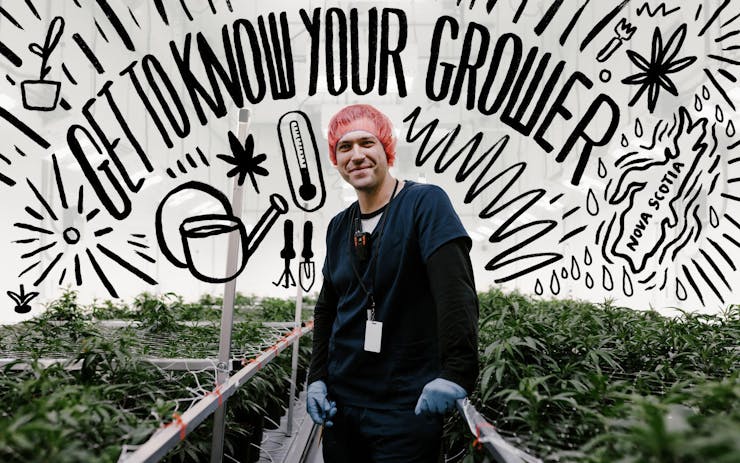Add sampling locally grown Highland bud to your Nova Scotia bucket list.
Along with eating fresh lobster on the waterfront and taking in the views at Peggy’s Cove, the cannabis grown in Antigonish is a must-try for weed-loving locavores in the area.Join the Leafly Canada Community
Meet the people behind Highland
Highland prides itself on producing Nova Scotia grown bud. It’s part of a family of craft brands under the umbrella of Canadian producer Biome Grow, which has also built local cannabis brands in New Brunswick, Prince Edward Island, and Newfoundland and Labrador.
It’s part of the company’s strategy to build smaller growing facilities—what CEO Khuram Malik refers to as “artisanal grow”—in Canada’s Atlantic provinces, as opposed to concentrating efforts on one or two larger operations.
The company currently employs 37 people, the majority of them are locals or university students from St. Francis Xavier. Among them, Head Grower and President Frank MacMaster from Antigonish, Nova Scotia, has over 30 years of experience growing cannabis and selecting strains. As the only one who knew how to grow, becoming the Master Grower was a natural fit.
How they grow
While plans are already in place to expand operations another 56,500 square feet, the Highland Grow facility in Antigonish, Nova Scotia currently occupies just 6,500 square feet.
Even once the company grows ten fold, the plan is to continue to produce small batch, hand-trimmed cannabis for the local market. Highland doesn’t want to bite off more than they can chew, or compromise the high quality of their product.

Photo by Sean Berrigan for Leafly
Highland has been cultivating strains like All-Kush, Sensi-Star, White Russian, and Sweet Tartan in a controlled grow. On a recent tour, Leafly visited the stark white warehouse full of weed illuminated like it’s high noon despite a late spring snowstorm raging outside.
Shop highly rated dispensaries near you
Showing you dispensaries near“We’re on the smaller scale for the products that we grow, we are increasing our footprint to increase our production but, basically we’re like a craft brewery, we craft our strains and we basically carry about four strains in total.”We decided to build provincial brands and provincial production facilities. It’s a lot more work but I think at the end of the day, it’s worth it.
The 100% LED setup maximizes output during Highland’s controlled, “craft” grow. MacMaster emphasized the fact that the plant uses “absolutely” no pesticides. Across all of their grow rooms, Highland can produce around 100,000 grams at a time.
“A lot of the industry right now are not able to grow with LED lights, but every step from seed to sale is with LED lights now at Highland Grow. And we’ve got really good results on product as far as density, and THC levels, and terpenes.”
The strain selection process rested on what Frank knew would grow well under highly sophisticated lighting conditions, to produce a consistent batch of product every time.
“We want to carve our own niche without worrying about what the larger guys are doing,” he said.

Photo by Sean Berrigan for Leafly
Concentrating Biome’s Canadian focus on Atlantic Canada, with smaller growing facilities, has two benefits, Malik said.
Smaller facilities are easier to manage than enormous ones, for starters. But it also fits in with Biome’s branding strategy of producing four separate brands for each Atlantic province, each with a particular feel and profile.
“We decided to build provincial brands and provincial production facilities,” Malik said. “It’s a lot more work but I think at the end of the day, it’s worth it.”
Products & prices
Products from Highland have been available through the Nova Scotia Liquor Commission (NSLC) since the beginning of 2019. On a recent visit, Leafly found a variety of dried flower and prerolls—previously mentioned strains like All-Kush, Sensi-Star, White Russian, and Sweet Tartan—that had been packed within a week of purchasing.
So far the products are selling well, Malik said, with prices at about $8/gram.
With files from Terri Coles and Soj Ramsay-Taylor.






